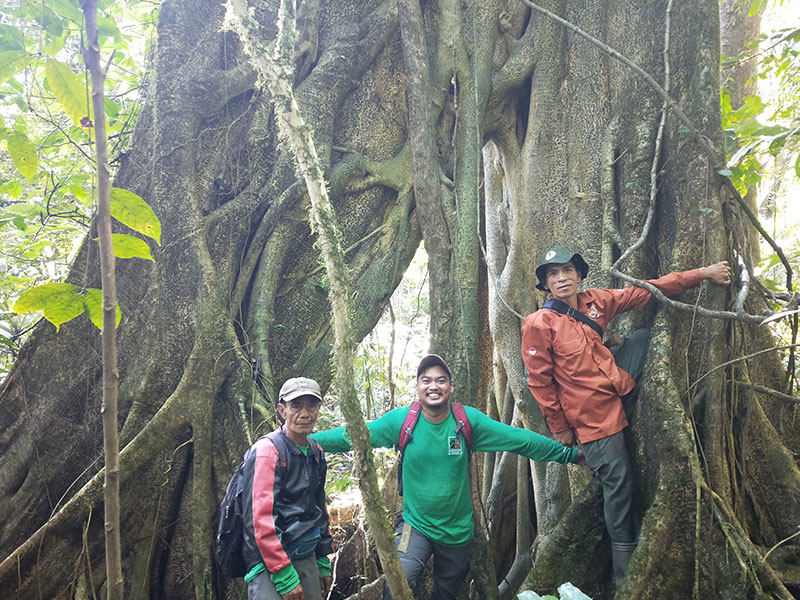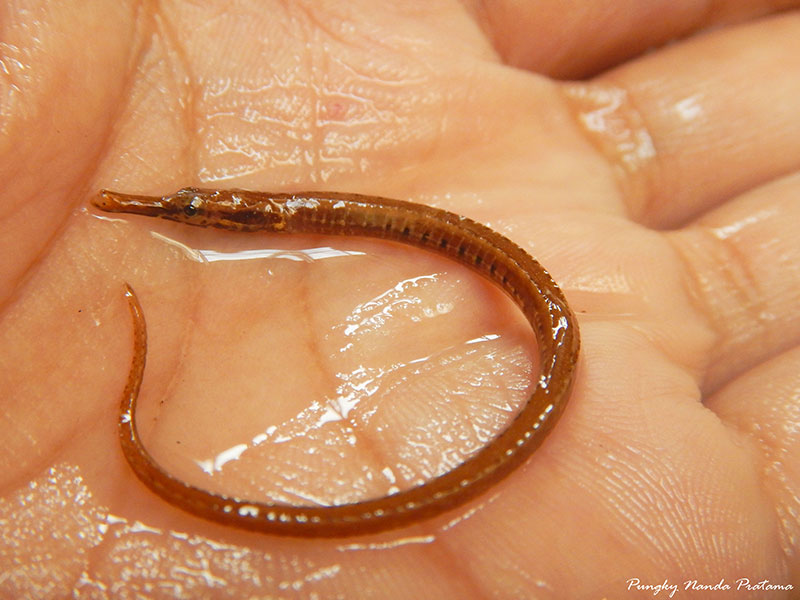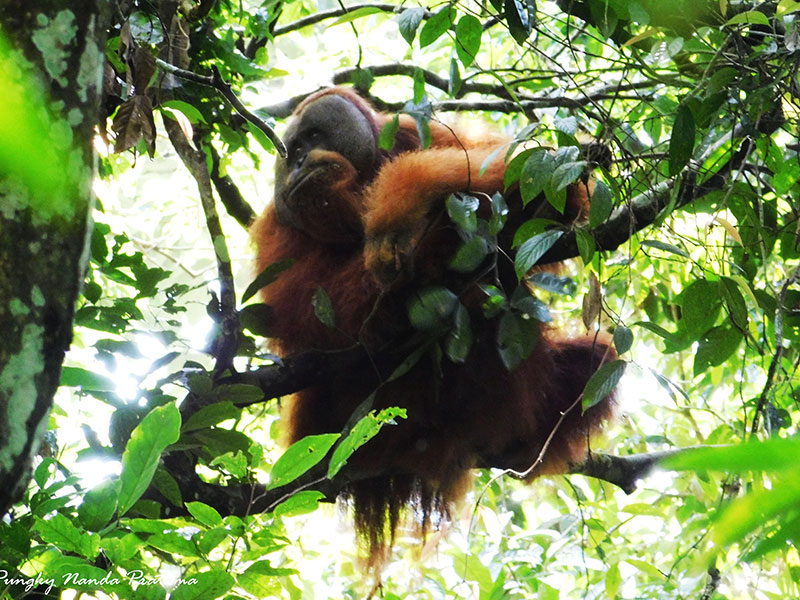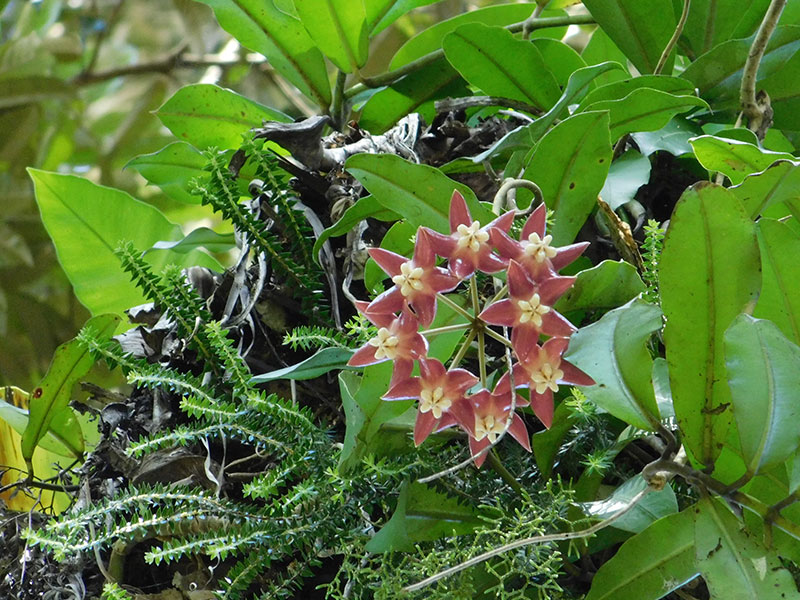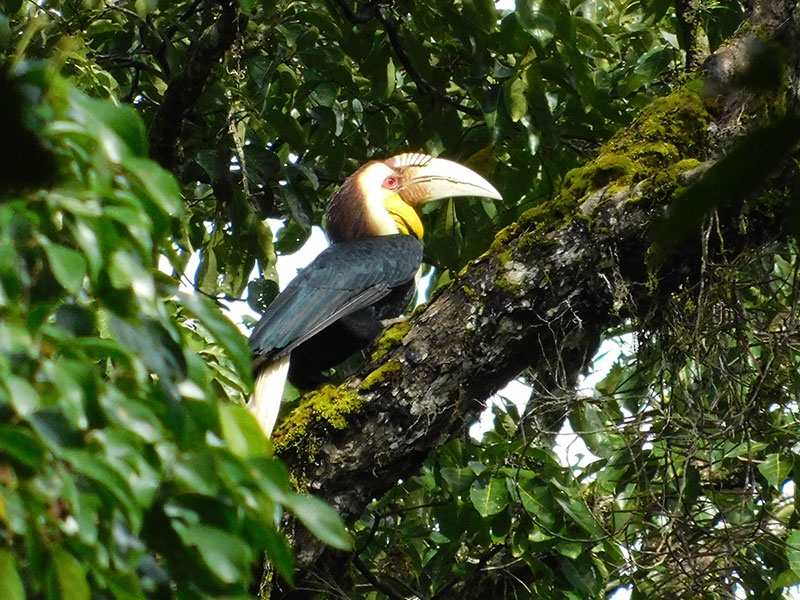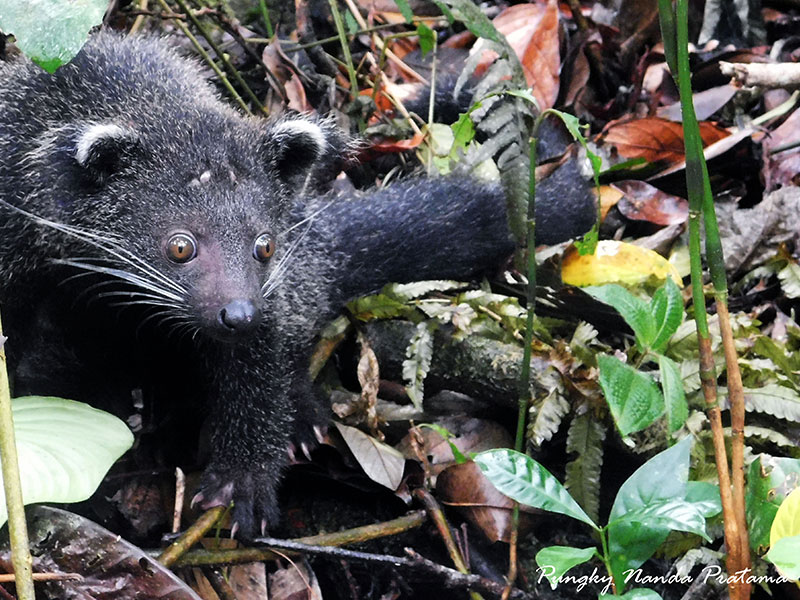Sumatra is truly an incredible island with millions of amazing species including two species of Great Ape. We were lucky to chance upon a massive apha male Sumatran Orangutan (Pongo abelii) with his huge cheekpads in its natural habitat.
Besides the Pongo abelii, in recent years, scientists have found new species of orangutans known as Tapanuli Orangutan (Pongo tapanuliensis). These orangutans are extremely similar to humans, with 97% of their DNA the same as that of human beings.
Sadly, the population of orangutans have plummeted over the years due to habitat loss and poaching activities Walking around the jungle in search of orangutans is akin to finding a needle in a haystack. As we walked along, we heard a deep calling voice of an orangutan and everyone immediately looked up to the trees to look for the orangutans. We were elated to spot an oranutan eating fruits while sitting on a tree.
This gives us hope and we are so glad to see many people, both locals and foreigners, coming together to help and protect orangutans and their habitats. We believe that we can protect our beloved island and its wildlife with our unified effort.
Fig. Sumatran Orangutan (Pongo abelii)
